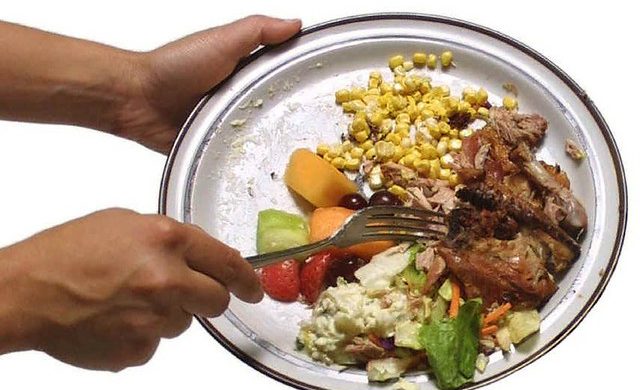According to the USDA, food waste is 30-40 percent of the food supply. That’s about 133 billion pounds of food wasted. Food waste is a persistent problem in the U.S. despite heightened awareness of this growing epidemic and collaborative efforts to stymie its effects. While the food left on your plate and later discarded is the primary driver, there are several other factors at play. But no matter the source, decreasing the amount of food dumped into landfills in favor of providing more nourishing meals for America’s food insecure is a top priority.
But there is good news. A new study shows that food insecurity declined in 2018 to pre-recession levels. That still, however, leaves about 37 million Americans wondering where their next meal will come from. Most alarming is the fact that the food insecurity rate for households with children is 40% higher than those without children. Many of those households are headed by minorities.
Experts project that reducing food losses by just 15% would provide enough food for more than 25 million Americans every year. But we must find ways to cut the waste.
Food Waste or Wasted Food?
The EPA uses the term “wasted food” instead of “food waste” to define food not used for its intended purposes, such as uneaten food left on your plate, uneaten prepared food, and kitchen scraps from restaurants. “Food waste” is thought of as food that no longer has value and should be treated as waste. Examples include spoiled food and food that’s been over-processed and is no longer edible.
But when some consumers hear the word “food waste” they think of the food kids don’t eat at supper. Or leaving uneaten leftovers in the refrigerator for days to spoil. In whichever form, it is estimated that more food reaches landfills than any other material in our everyday trash. When that food rots, it produces methane gas, a greenhouse gas more potent than carbon dioxide.
Wasting food not only takes it out of the mouths of the food insecure but also wastes the resources used to grow, harvest, transport, and package that food.
Food Waste Leaves a Big Carbon Footprint
Food waste not only feeds into America’s food insecurity, but it also leaves a big carbon footprint. From air and water pollution to greenhouse gases and climate change, food waste has a significant impact on our environment. About 11% of all greenhouse gases from the food system can be eliminated if we stop wasting food. This may be one of the most impactful actions we can take to reverse global warming.
How We Can Make A Difference
Food waste is not just a problem within the U.S., it is a global problem. It will take a worldwide effort to eradicate. But, here in the U.S., we are making strides. In 2015, the USDA and EPA partnered under a common goal to reduce America’s food waste by 50% by 2030. The Food Recovery Hierarchy was created to demonstrate the best way to address food waste. Essential to that program is a focus on improving food efficiency, recycling, decoding food labels, and delivering food to the 1 in 8 Americans struggling with hunger.
Companies like Kroger are also stepping up to decrease food waste in America. Kroger’s Zero Hunger Zero Waste initiative is working to reduce hunger and eliminate food waste by 2025.
New startups have emerged, making new food from wasted ingredients primarily from farms and food processing plants. The idea of “upcycling” food has lead to innovations in food technology and sparked creativity from brands like Wtrmln Wtr, who transform ugly watermelons left to die on the vine into a refreshing juice.
But you don’t have to work for the government or your local grocery store to help end food waste. Just be intentional about reducing the amount of food that you throw out and holding legislators and companies accountable. Find out how they handle food surplus. Inquire about their sustainability plan. Vote with your ballot or your checkbook.
Personally, change how your family consumes food. For example, be mindful of purchasing food you already own. Before your next grocery run, look in your refrigerator and pantry first. If you already have that item, you don’t need to buy it now. Consider waiting until you run out.
Make a shopping list. Only purchase food for the meals you’re planning to make. Store leftovers appropriately and eat them for lunch the next day. Educate yourself on the proper way to store fresh food to prevent unsavory surprises like mold and spoilage. If you are a big-box warehouse shopper, remember that buying in bulk only saves money if that food is consumed. If you prefer eating out instead, consider small plates or sharing a meal. Lastly, donate unused, unexpired food to local food pantries and community kitchens.
These are just a few of the practical ways that you can make a difference in the fight against food waste and wasted food. But it’s going to take all of us to end this growing epidemic for good.


